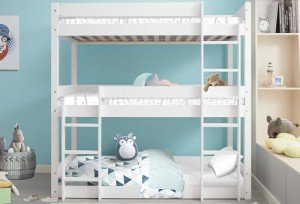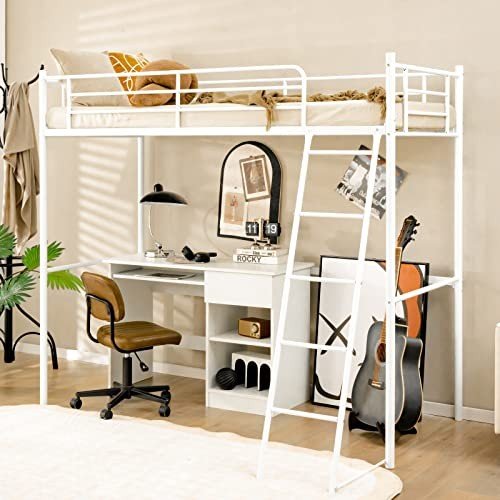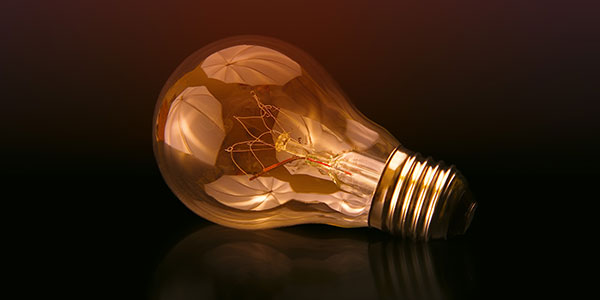Nine Things That Your Parent Teach You About Bunk Beds Children's
본문
The Ultimate Guide to Bunk Beds for Children: Safety, Styles, and Benefits
When it pertains to styling a child's space, parents frequently face the double challenge of making the most of space while guaranteeing convenience and functionality. Bunk beds have actually emerged as a popular service that addresses these needs, providing not simply sleeping arrangements however also adding to a space's visual. In this thorough guide, we will look into various aspects of children's bunk beds, concentrating on their benefits, safety features, styles, and factors to consider for parents contemplating this purchase.
Table of Contents
- Advantages of Bunk Beds
- Security Features to Consider
- Types of Bunk Beds
- Style and Style Options
- Maintenance Tips
- Often Asked Questions (FAQs)
1. Benefits of Bunk Beds
Bunk beds offer various benefits for kids and their parents. Here are some key advantages:

Space-Efficiency: Bunk beds are an excellent service for smaller spaces. By stacking one bed on top of another, more floor space is available for play, storage, or research study locations.
Cost-efficient: When kids share spaces, bunk beds can minimize the requirement for buying 2 separate beds, hence saving money.
Fosters Social Interaction: Bunk beds can assist siblings or pals bond by sharing a space, developing opportunities for social advancement.
Enjoyable Factor: The idea of sleeping "up high" adds a lively element to bedtime, making the transition to sleeping alone easier for some kids.
Versatile Design: Bunk beds come in various designs, colors, and develops to match any space style, permitting personalization that shows the child's character.
2. Security Features to Consider
Safety is paramount when it comes to kids's furniture, especially in the case of bunk beds. Here are some crucial safety features to assess:
| Safety Feature | Description |
|---|---|
| Durable Construction | Frames made from strong wood or metal are preferred. |
| Guardrails | Must be at least 5 inches high and extend along both sides of the upper bunk. |
| Ladder Design | Guarantee ladders are securely connected and have non-slip steps. |
| Mattress Size & & Fit | Should fit snugly within the frame to avoid gaps. |
| Weight Limit | Always stick to the producer's weight limitation suggestions. |
3. Types of Bunk Beds
bunk beds Children's beds come in a number of designs, accommodating various requirements, preferences, and space sizes. Here are some typical types:
Standard Bunk Bed: The most standard type, with one bed on top of another.
Loft Bed: Features a high upper bed with space underneath for a desk or play location.
Futon Bunk Bed: Combines a leading bunk with a futon on the bottom, providing flexibility for seating and sleeping.
L-Shaped Bunk Bed: This design has the leading bunk set at a perpendicular angle to the bottom, creating a little corner location.
Triple Bunk Bed: Accommodates three children utilizing stacked beds, perfect for big households or slumber parties.
4. Style and Style Options
When it concerns selecting a style for kids's bunk beds, the options are virtually limitless. Here are some popular designs:
Traditional Style: Often made of wood, these bunk beds include ornate details and are best for traditional or rustic-themed rooms.
Modern Style: Characterized by clean lines and minimalist designs, modern bunk beds can be made from metal or wood.
Themed Bunk Beds: Some brands provide bunk beds shaped like castles, vehicles, or playhouses, making bedtime less of a chore.
Convertible Bunk Beds: These can be separated into two private beds, using versatility as kids grow.
Colorful Options: Bunk beds in dynamic colors can include a sense of delight and playfulness to any room.
5. Maintenance Tips
Preserving a bunk bed is vital for durability and security. Here are some ideas:
Regular Inspections: Check for loose screws or bolts every couple of months and tighten them as needed.
Cleaning up: Wipe down frames routinely to avoid dust accumulation; consider using a vacuum for hard-to-reach areas.
Mattress Care: Rotate mattresses frequently and use protective covers to extend their life.
Watch for Wear and Tear: Look for any signs of damage in the wood or metal and consider changing parts if necessary.
Teach Kids Safety Rules: Encourage children to utilize ladders appropriately and guarantee they comprehend the security features of their bed.
6. Often Asked Questions (FAQs)
Q1: What age is appropriate for sleeping in a leading bunk?
A1: Typically, kids aged 6 and older are advised for upper bunk sleeping, as they have the necessary motor abilities to climb safely.
Q2: Do bunk beds come with a mattress?
A2: Most bunk beds are sold as frames only, so you will require to purchase bed mattress independently. Guarantee that the bed mattress fits the frame comfortably.
Q3: Can bunk beds be separated later on?
A3: Many designs enable conversion into 2 specific beds, providing versatility for future requirements.
Q4: How can I ensure my kid's security on a bunk bed?
A4: Comply with safety standards and guarantee guardrails, a tough frame, and a secured ladder are in place.
Q5: Are there weight limits on bunk beds?
A5: Yes, constantly check the producer's requirements concerning weight limits to ensure security.

Bunk beds for kids can serve numerous functions while ensuring safety and design. With diverse styles and models readily available on the market, moms and dads can discover an unit that not only takes full advantage of bed room space but also reflects their kid's unique tastes. As with any furnishings, understanding safety features, upkeep, and how they suit a kid's way of life will ensure that these beds remain a useful furniture service for years to come.
Through mindful factor to consider and adherence to security guidelines, bunk beds can provide a lasting, fun, and functional sleeping service that children enjoy.


댓글목록 0